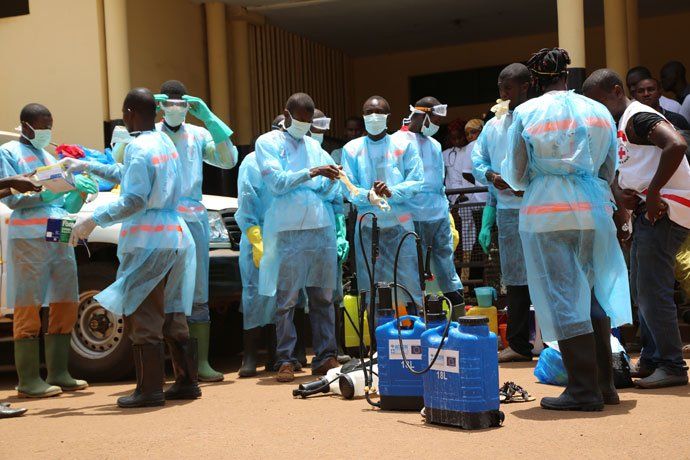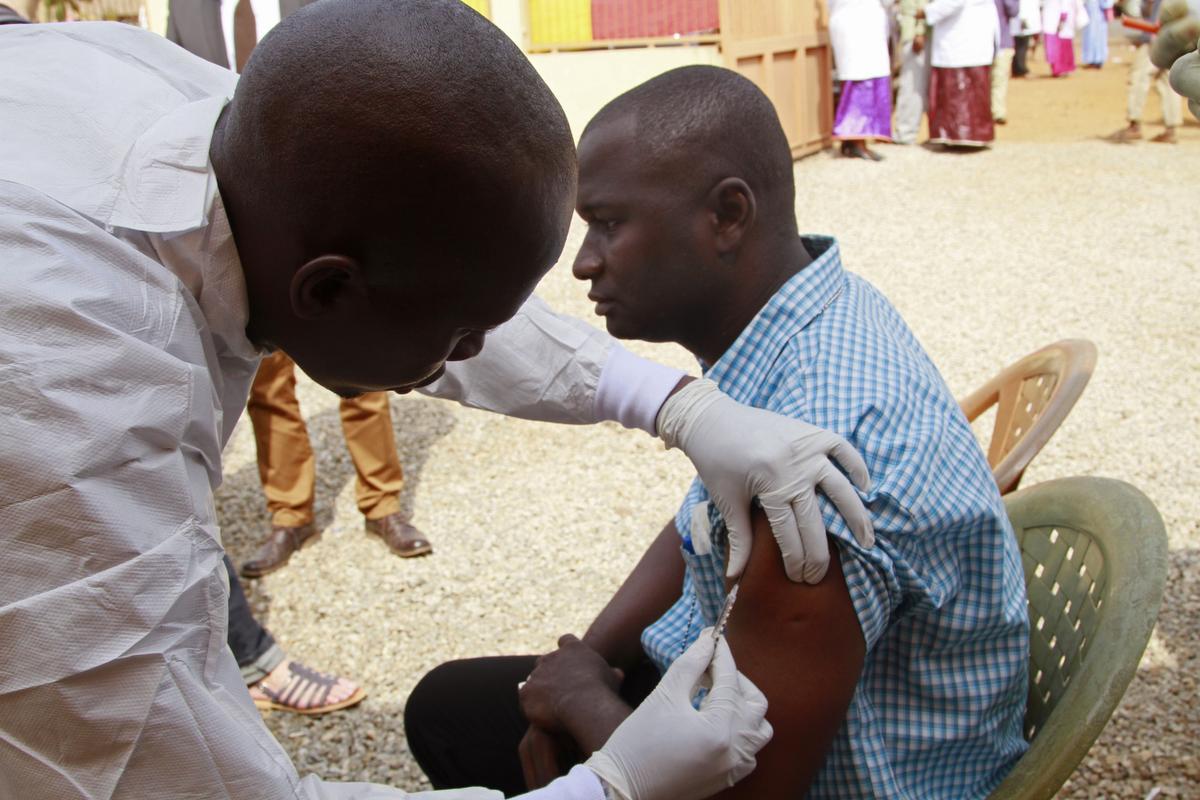Ebola Response Information System
Conakry, Guinea
October 2014-March 2016
Overview
Overview
Ebola viral disease (EVD) is a severe, often fatal illness that is transmitted by direct contact with blood, bodily fluids, and tissues of infected animals or people. Since December 2013, Guinea has been fighting the largest Ebola epidemic in history. As of December 31, 2015, there were 3,829 total cases and 2,507 total deaths in Guinea alone.
In September 2014, President Alpha Conde of the Republic of Guinea requested the assistance and the technical guidance of the Earth Institute (EI) and Millennium Promise Alliance (MPA) to strengthen its health sector information systems for community-based Ebola response. In response to this request, the Government of Guinea (GOG), in partnership with the Earth Institute at Columbia University (EI) and the United Nations Population Fund (UNFPA), launched the National Mobile Contact Tracing Program to support Ebola response using mobile phone technology.
Deployment of this system began in November 2014 in Conakry, Guinea, and was expanded to a total of 5 prefectures by April 2015. To date, the mobile system has not replaced the paper-based system in the 5 prefectures where the program is active. However, as of December 31, 2015, 270 contact tracers in the 5 prefectures were actively using the mobile system to collectively monitor 18,838 contacts. Real-time data in emergency situations are indispensable for guiding strategy, coordinating interventions, and troubleshooting problems.
The technical support of EI, MPA and UNFPA has improved the contacts tracing system, the use of data by the managers at local and national level, the decision making on evidence based, the accountability of data in real time. The program has also improved the use of new technology by Guinea government stakeholders.
Objective
Development of a real-time information system for national and local response teams to track Ebola cases.
We established a real-time information system for contact tracing activities in Guinea. This system comprises a Smartphone application that supports contact tracer workflow and enables rapid submission of surveillance data, which is linked to a business analytics and visualization software. Dashboards built on this platform facilitate access to the data by government response managers based in both prefecture-level offices and within the National Ebola Coordination Unit (NECU).
The system allows for:
• Improved quality of work through built-in algorithms for contact tracers to follow;
• Real-time identification of contacts who have not been visited, allowing same-day intervention; and
• Stronger accountability of contact tracers through timestamps and collection of GPS points with their surveillance data.





